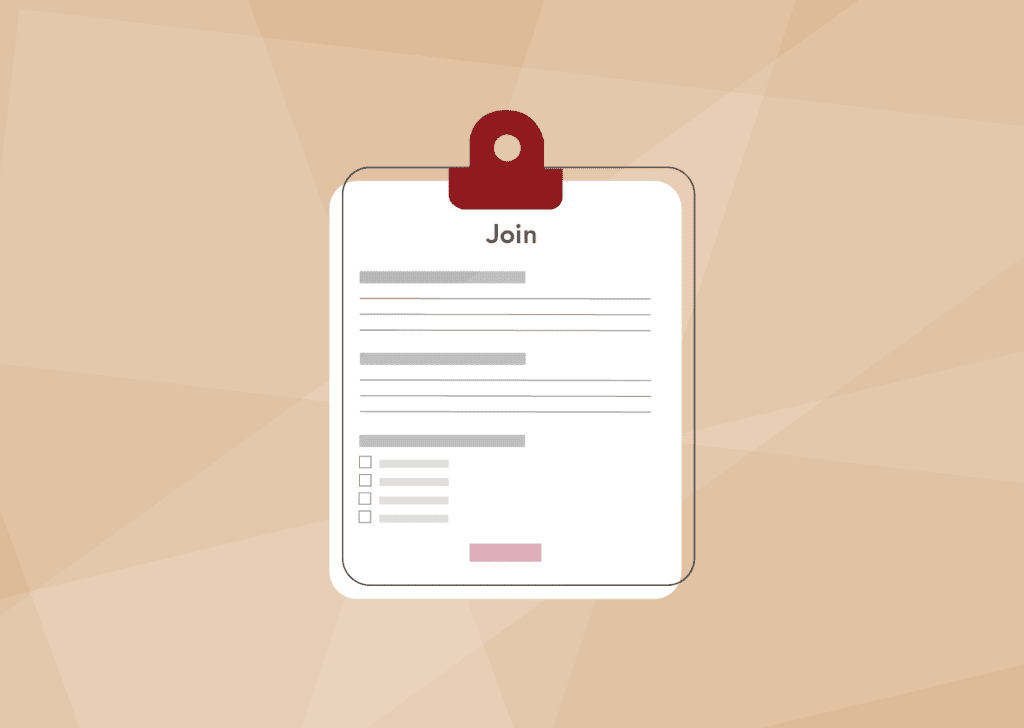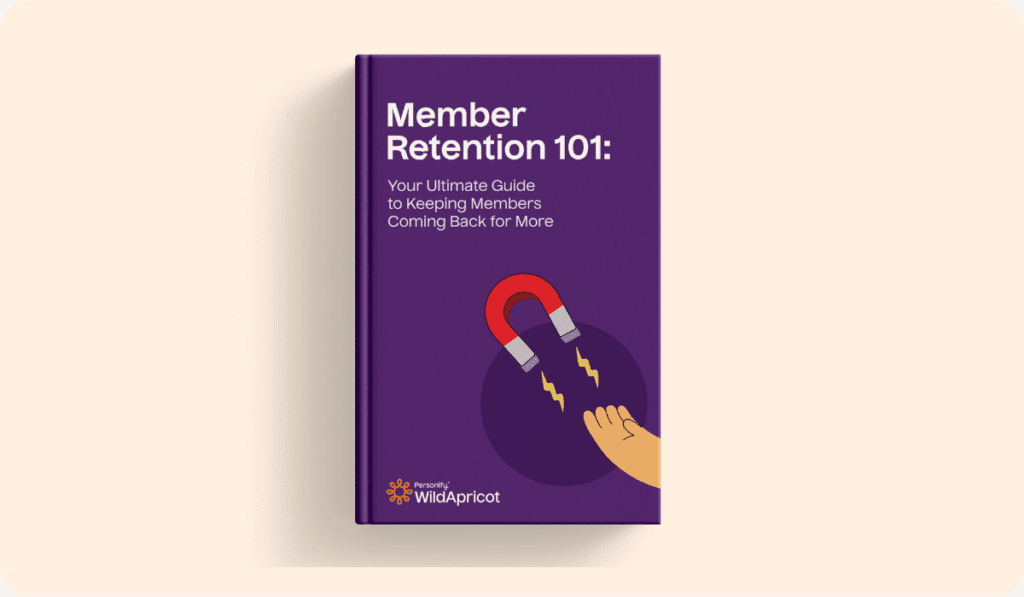One of the biggest reasons why people join professional associations is to take advantage of mentorship opportunities. What better way to advance in your career than to sit one-on-one with someone who works in the same field and has been in your shoes?
Mentees aren’t the only ones benefiting from mentorship, either. Mentors get the chance to grow both personally and professionally and experience improved self-esteem and fulfillment. Organizations that have a formal mentorship program see better member satisfaction, renewal rates, and membership growth.
If you run a professional association, or any kind of membership organization for that matter, and don’t yet have a mentorship program in place, this article is for you. We’ll go over exactly why you need a mentorship program, how to implement one, and how to evaluate its success.
Let’s dive in!
What is a Mentorship Program?
A mentorship program facilitates mutually beneficial relationships between more experienced members of your association (mentors) and those who are newer to the industry (mentees). It offers a structured setting in which mentors can provide mentees with knowledge, advice, guidance, encouragement, and anything else that might help them in the journey.
A mentorship program typically has a formal structure with distinct start and end dates, a set of goals, and a protocol. Depending on the size of your organization, it could require quite a bit of time and effort to set up and maintain, so it’s usually a good idea to assign a dedicated mentorship program manager role to a staff member or volunteer.
Benefits of a Mentorship Program
A successful mentorship program benefits everyone involved. Below are a few of the most common benefits typically experienced by mentees, mentors, and organizations as a whole.
Mentee Benefits
-
Help navigating and advancing in their careers
-
Wisdom and perspective a more experienced professional
-
Help setting and achieving goals
-
Opportunities for skill development and new knowledge
-
Networking opportunities
-
Meaningful professional relationship that could lead to future opportunities
Mentor Benefits
-
Opportunity to nurture new talent and potential future hires
-
Opportunities to develop leadership, communication, and other soft skills
-
Personal and professional growth
-
Raised self-esteem and fulfilment that comes from giving back to one’s profession
-
Opportunity to network with other mentors
Organizational Benefits
-
Enhanced experience for existing members and improved member retention rates
-
Incentive for new members to join and growth for the organization
-
Better member engagement and satisfaction
-
Opportunity to develop the industry by developing the people in it
-
Opportunities to nurture diverse talent and solve industry-wide problems
How to Start a Mentorship Program
Your members may already be looking to each other for mentorship in informal ways, but to really help everyone reap the benefits of mentorship, it’s important to establish a formal mentorship program.
Follow these steps to get started:
Step 1: Set Program Goals
What are you hoping to achieve with your mentorship program? The answer to this question will probably be aligned with your organization’s overall goals and may include things like:
-
Attract new members
-
Improve retention rates
-
Improve member satisfaction
It’s also a good idea to establish program-specific specific goals that will help you achieve the above organization-wide goals. A great goal, for example, is to establish X number of successful mentor-mentee relationships by a certain deadline. Getting clear on these goals will help guide the process of creating your mentorship program and stay on track.
Finally, be sure to establish clear parameters for success (for example, high ratings on a survey filled out by mentors and mentees at the end of the mentorship program). These will help you identify what you’re doing well and where you can improve moving forward.
Step 2: Design Your Program
A successful mentorship program has a clear structure and guidelines. Without them, even the most enthusiastic and committed participants will find it hard to stay on track and experience the full benefits of the program.
Start by establishing a clear start and end date for each round of the program. For example, six months to a year is a manageable range for most participants. This way, mentors won’t feel like they’re committing themselves to an indefinite responsibility. Be sure to also have a clear policy about ending a mentorship term early, in case the mentor-mentee pairing isn’t a good fit.
Next, think about whether your program will focus on 1:1 partnerships or small groups. This may depend on how many people express interest in participating. For example, if you find that you have many more mentees than mentors, it may be a good idea to connect two mentees for every one mentor.
Most importantly, establish a guiding structure for how the participants should meet (ex: how often, for how long, in what setting, etc.) and what’s expected from them for the duration of the program. Provide a sample schedule, milestones to hit, suggested activities, prompts, reflection questions, or anything else that might help them reap the full benefits of the mentorship experience.
Let participants know that they’re free to adjust your guidelines to fit their own needs, but those who are new to mentorship and aren’t sure what they’re hoping to get out of the relationship will appreciate having a map to follow.
Step 3: Create Participant Guidelines
The success of your mentorship program depends, in part, on the participants you attract, so it can be helpful to create a few guidelines around who should be a mentor or mentee.
For example, a great mentor likely has at least a decade of experience in their field, has been with your association for a number of years, and has a strong interest in helping others.
These guidelines don’t have to be strict — you never want to turn people away who are looking for a new experience, but they can help potential participants decide whether or not this is something they’d like to sign up for.
Perhaps one of the most important guidelines for both mentors and mentees is the time commitment associated with the program. Be sure to let people know what the expectations are, so they can evaluate whether or not they have the bandwidth for it.
Finally, have both mentors and mentees fill out an application form. Again, this is not to reject anyone’s application, but it’s an opportunity to collect important information about their experience, interests, and goals. Having this information will help you create the most effective mentor-mentee matches.
Step 4: Find Participants
Promote your new mentorship program to your members by sending out an email about it, including it in your newsletters, mentioning it at meetings, and on your website. Be sure to clearly outline the benefits for both mentors and mentees, and provide a way for people to express interest or head straight to the application form.
Don’t worry if you don’t garner much interest right away — you can still go ahead and get the program started with just a few pairs or small groups. Once the first set of mentors and mentees begin to experience the benefits of mentorship, you can ask them to be advocates of the program and help promote it to the rest of your members.
Step 5: Pair Mentors and Mentees
When it comes time to match mentors and mentees, you have a number of options:
-
Let mentees select their own mentors from a directory
-
Review everyone’s applications and arrange pairs based on common interests and areas of expertise
-
Develop a hybrid model where you review applications and suggest three mentors based on your findings, but let mentees make the final choice
-
If you have a large number of participants, consider automating the process and using an algorithm that will automatically review applications and create matches
Whichever method you choose, consider offering participants a trial period to “test out” the match. There’s nothing worse than feeling stuck in a mentor-mentee relationship that you don’t think will work out. Giving both mentors and mentees a formal opportunity to opt for another match will prevent any bad feelings and result in the best possible matches for everyone.
Step 6: Prepare Mentors and Mentees
Once the matches have been made, it’s almost time to let the mentor-mentee pairs start their meetings. But before that happens, it’s important that they’re both prepared to participate fully in the program.
It’s not a bad idea to host separate group training sessions for both mentors and mentees. At these sessions, you can discuss your expectations, introduce them to the program structure, and provide them with advice and best practices for success. This is also where you’ll share any templates or activities, introduce them to any digital tools they’ll need to use, and address any questions or concerns.
Step 7: Keep Communicating
Even when the program is up and running, the work doesn’t end. Many mentors and mentees lead busy lives and can find it challenging to make the time to meet (even those who are extremely enthusiastic about the program and its benefits). It’s up to you to implement regular touchpoints, remind them about the program, check-in on their progress, and provide helpful resources. If anyone is having any concerns about their experience, you can be there to help.
Step 8: Grow the Program
Once the first round of mentor-mentee matches has launched and is running smoothly, you can think about opening up for another round of applications. To help promote subsequent rounds, be sure to get feedback from existing participants and use it to attract other members.
As the program grows, it can be challenging to manually keep track of who belongs to which round, their matches, and their start and end dates. Consider using a membership management software to help automate this process and keep everyone organized. It will save you a lot of time and headaches!
Virtual and Hybrid Mentorship
In light of the recent shift to remote work and meeting environments, you may be wondering if it’s possible to run a successful mentorship program virtually. The answer is absolutely! In fact, virtual mentoring may actually be easier to execute and may be preferred by both mentors and mentees.
Does Virtual Mentorship Work?
Depending on the nature and size of your organization, your members may be scattered across the country (or even the world). If that’s the case, virtual meetings between mentors and mentees are the perfect solution.
Even if all your members are in the same city, many people still prefer to meet virtually because it saves travel time and allows participants to be more flexible (for example, it’s much easier to fit in a virtual meeting while dinner is on the stove if you don’t have to leave the house to attend it).
What is Hybrid Mentorship?
Despite the advantages of virtual mentorship, some people may still like to meet face-to-face from time to time (for people also working from home, Zoom fatigue is a real issue).
Hybrid mentorship can help — mentors and mentees can have some virtual and some face-to-face meetings. You can help by giving them the freedom to choose when and how to meet. You can also organize small events to encourage participants to come out and see each other in person, along with relationship-building and networking activities.
How to Equip Your Mentors and Mentees for Success
Whether your participants choose a fully remote or a hybrid model, it’s important for them to feel equipped for success. Make sure they have the necessary technology, access, and training to be able to meet virtually and to complete all associated activities (surveys, self-reflection, etc). It can also be helpful to have someone they can contact in case of technical difficulties or any other issue related to meeting virtually.
Signs of Successful Mentoring Programs
As you reach the end of the first round of your mentorship program, it’s important to evaluate your results, so you can identify any areas for improvement. Check back on the goals you originally set — were you able to achieve them? Also be sure to survey your participants and see if they have any positive or negative feedback.
Here are a few other signs that your mentorship program has been effective:
-
Both mentors and mentees come back to participate again
-
More people are enrolling in the program
-
Mentees become mentors
-
You’re attracting new members to your organization
-
Your member renewal rates improve
-
Mentorship becomes a part of your organization’s culture
What’s Next?
In the last few years, there’s been a clear upward trend in the number of membership organizations who offer mentorship opportunities for their members, and for good reason. Mentorship benefits everyone involved and is a relatively simple way to engage members and add value to their membership.
If your organization is ready to start a mentorship program, you’ll need a membership management software to help tackle all the administrative work that comes with running it. Click here to try Wild Apricot for free and see why it’s the # 1 rated membership management software used by professional associations and membership organizations just like yours!




![The Ultimate Guide to Membership Management Software For Nonprofits [2025 Edition]](https://b2993016.smushcdn.com/2993016/wp-content/uploads/2024/02/Main-Blog-Thumbnails-2025-11-06T180717.949-1024x717.png?lossy=1&strip=1&webp=1)




